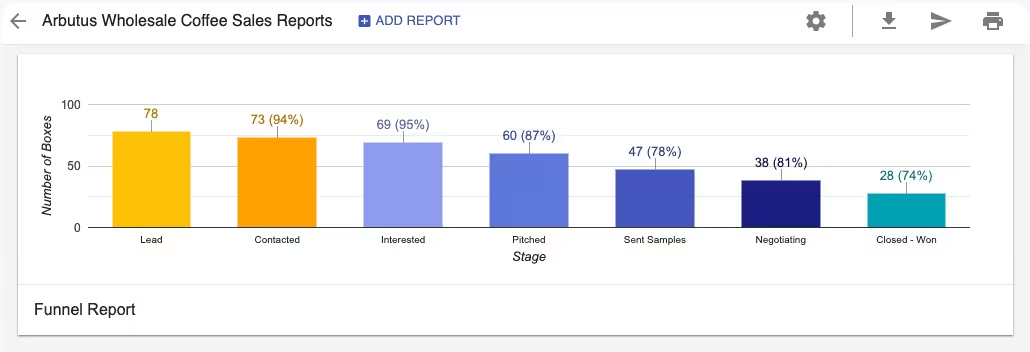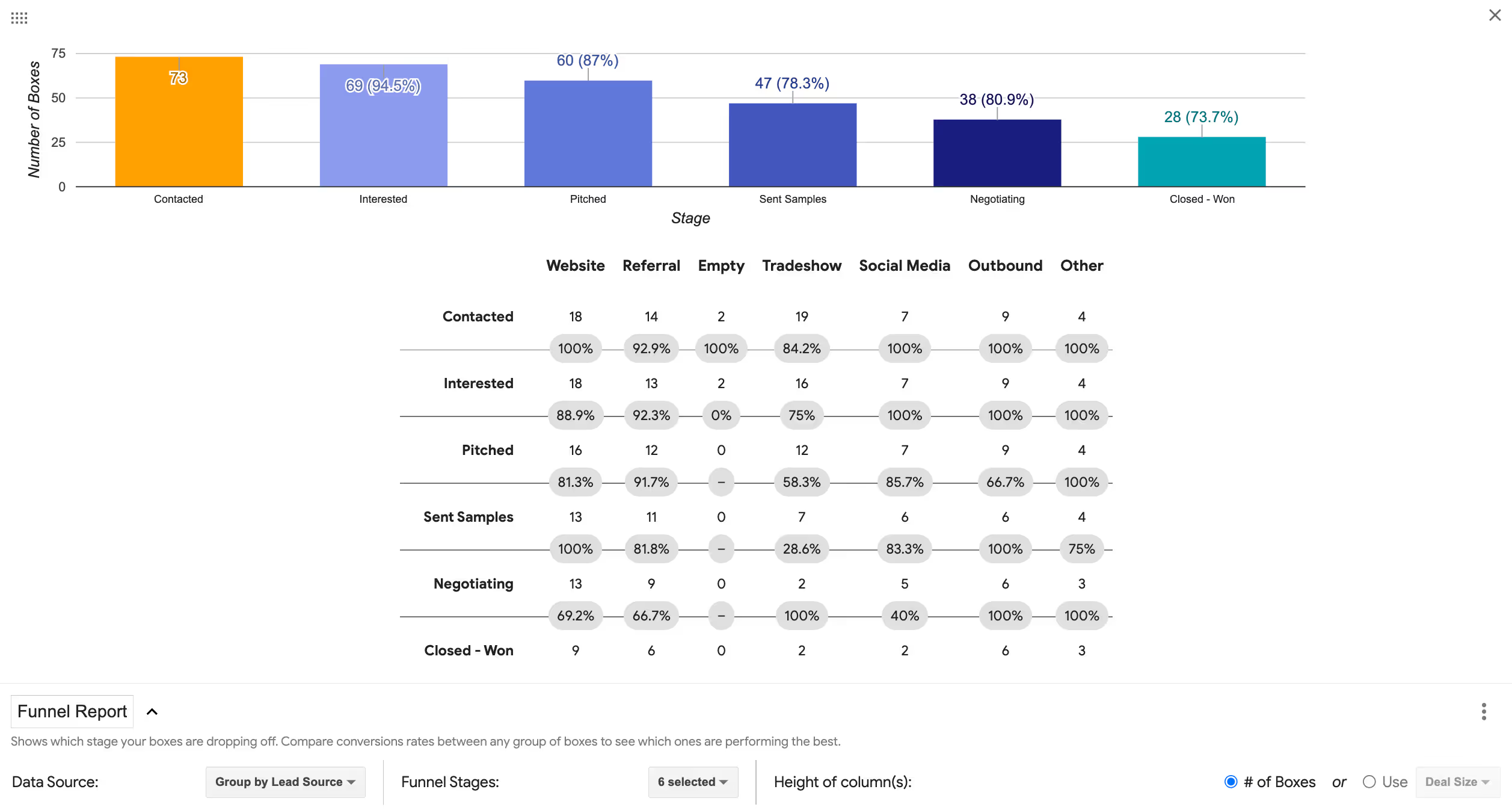New video lessons: filter and segment your pipelines with saved views
Saved views let you filter and segment a pipeline full of boxes to see which opportunities need your attention the most.
Pipelines help you track leads, contacts, and opportunities through stages of a process so you can close more deals and stay on top of important follow-up and tasks.
Streak funnel reports now enable you to work more strategically within your pipelines by identifying where conversions are falling and pinpointing exactly how to fix a leaky sales funnel.

A funnel report is used to measure the performance of a sales, fundraising, hiring, or other type of pipeline by identifying which stage your leads are dropping off from. A funnel report will show you the highest stage your leads entered and how much value moved from each stage to the next.
They help you visualize how items are moving through your pipeline so you can hone in on bottlenecks to improve your process.

You can also isolate and compare variables in your funnel.
For example, you can see how each of your sales reps are performing and how they can improve. Or you could compare conversion rates for different types of customers in your pipeline.
Using comparisons, funnel reports can help you understand things like:
Below, we’ll show you how you can customize funnel reports in Streak and compare conversion rates between reps, lead source, creation date, and other data to help increase conversions in your funnel.
Streak offers a standard funnel report out of the box, ready to go in your reports dashboard, and a customizable funnel report.
Simply add a funnel report to your reports dashboard to access this data.
You can then customize your funnel report with different data sources using saved views to get more targeted insights on your conversion funnel.
The out of the box funnel report uses your all-time historical pipeline data for all stages to show you where leads drop off from your conversion funnel.

To add a funnel report to your reports dashboard:
<div class="anchor-wrapper"><div id="interpreting-the-funnel-report" class="anchor-target"></div></div>
The standard funnel report shows you the number of boxes that reached each stage of your pipeline. The bars in the graph represent the number of boxes that ended up, or terminated, in each stage.
You’ll also see what percentage of boxes converted from each previous stage.

<div class="anchor-wrapper"><div id="customize-your-funnel-report" class="anchor-target"></div></div>
Click the arrow next to “Funnel Report” to customize your report and create comparisons with your pipeline data.

There are 3 main ways to customize your funnel report:



<div class="anchor-wrapper"><div id="filter-funnel-report-and-compare-conversion-rates" class="anchor-target"></div></div>
Using a specific data source for your funnel report allows you to get more valuable insights by looking at certain date ranges, comparing conversion rates between sales reps, or understanding how different lead sources convert.
Data sources are pulled from your saved views, which are used to filter, sort, and group the boxes in your pipelines. There are 3 main components of saved views that help you hone in on specific data in your pipelines:
1. Filters
Filters determine what is included in your funnel report by only including a subset of boxes from your pipeline. For example, you could use a filter to look at leads that were created in a certain date range or to exclude certain types of deals from your conversion funnel.
2. Groups
Groups determine how your data is shown in the funnel report comparison chart. Group your leads by something other than the stage to compare conversion rates based on different factors.
For example, you could group your pipeline by lead source to compare performance and evaluate which lead sources to continue investing in.

You could also group by a date, like when the lead was created. This allows you to compare conversions month over month, year over year, quarter over quarter, etc. and see how your conversion rates are changing over time.
3. Sorting
Sorting in a data source does not have any effect on your funnel reports.
